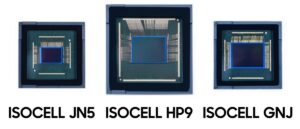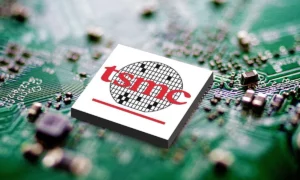Introduction
The semiconductor industry, often regarded as the backbone of technological advancement, continues to witness significant shifts, especially in regions like China where investment and innovation are driving growth. Recent financial reports from two prominent players in China’s semiconductor foundry market, SMIC International and Hua Hong, offer valuable insights into the industry’s dynamics and future outlook.
Follow us on LinkedIn for everything around Semiconductors & AI
SMIC International’s First Quarter Performance
SMIC International, China’s leading semiconductor foundry, reported robust revenue growth of USD 1.75 billion for the first quarter of this year, marking a 19.7% year-on-year increase. However, the net profit saw a substantial decline of 68.9% compared to the same period last year, falling below market expectations. The gross profit margin also experienced a decline, raising concerns among investors.
Despite these challenges, SMIC’s management highlighted increased customer willingness for restocking in the first quarter, leading to a 7% increase in shipments of 8-inch equivalent wafers.
The capacity utilization rate also improved to 80.8%, indicating operational efficiency gains. For the second quarter, SMIC anticipates continued demand from customers and aims for a 5% to 7% increase in revenue. However, increased depreciation due to capacity expansion is expected to impact gross margins, with guidance set between 9% and 11%.
Looking ahead, SMIC remains optimistic about its full-year prospects, aiming for sales revenue growth to surpass the industry average. This ambition underscores the company’s determination to navigate challenges and capitalize on opportunities in the evolving semiconductor landscape.
Read More: AI Dark Horse: Why Apple Could Win the Next Evolution of the AI Arms Race – techovedas
Hua Hong’s First Quarter Performance
Hua Hong, China’s second-largest semiconductor foundry, reported contrasting figures for the first quarter. With revenue decreasing by 24.62% year-on-year and net profit experiencing a significant decline of 78.76%, the company faced notable challenges.
Despite these setbacks, Hua Hong provided guidance for the second quarter, projecting main business revenue between USD 470 million and 500 million. However, the gross margin forecast of 6% to 10% indicates continued pressure on profitability.
Read More: What Does Mark Zuckerberg Think about AI: 9 Key Takeaways You Should Know – techovedas
Implications for China’s Foundry Industry
The financial performances of SMIC International and Hua Hong reflect the complexities and competitive pressures within China’s semiconductor foundry sector. While SMIC demonstrated revenue growth, profitability concerns persist, partly attributed to increased depreciation and lower gross margins. Hua Hong, on the other hand, faced substantial declines in revenue and net profit, signaling operational challenges.
These developments occur within the broader context of China’s ambitions to bolster its semiconductor capabilities and reduce reliance on foreign suppliers. TrendForce’s projections indicate a gradual increase in China’s mature process capacity, driven by policies promoting local production and IC development. Giants like SMIC, Hua Hong Group, and Nexchip are expected to lead this charge, contributing to the industry’s growth trajectory.
Read More: 5 Most Useful and Important High-End Graphics Cards – techovedas
Conclusion
The financial reports of SMIC International and Hua Hong offer valuable insights into the performance and prospects of China’s semiconductor foundry industry. While both companies navigate challenges, they remain pivotal players in China’s quest for semiconductor self-sufficiency. As the industry evolves and global competition intensifies, strategic initiatives and technological advancements will be critical in shaping the future landscape of China’s semiconductor foundry sector.








